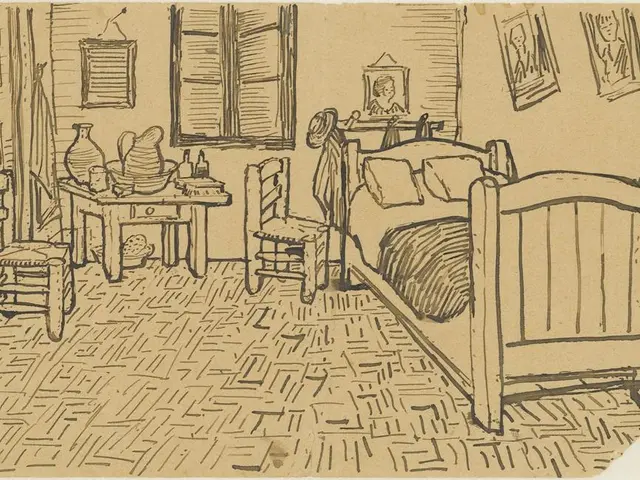Tile Height Guidelines Across All Spaces: Experts Reveal Optimal Heights for Each Room
In the world of home renovation, tiled upstands are a popular choice for adding a touch of style and functionality to your kitchen, bathroom, or utility room. These protective barriers not only enhance the aesthetic appeal of your space but also offer practical benefits against water splashes and stains.
In kitchens, bathrooms, and utility rooms, the typical height of a tiled upstand usually ranges from 50mm to 150mm, with common standard sizes being around 100mm. This height provides sufficient protection from water splashes and is aesthetically compatible with wall units and worktops.
Kitchen upstands often come in set heights such as 50mm, 70mm, and 100mm to suit the height of worktops and wall units while preventing water ingress. For roof lantern upstands, UK building regulations recommend a minimum height of around 150mm to ensure proper water run-off and prevent water ingress. However, kitchen or bathroom tiled splashbacks usually do not need to be this tall.
In practice, a height of 100mm for tiled splashbacks/upstands is very common in kitchens and utility rooms to cover the area prone to water splashing without interfering with kitchen fixtures. In bathrooms, tiled splashbacks or half-height tiling often frame and protect basin areas and other wet zones; typical upstand heights correspond with the layout but usually start from around 100mm upwards depending on design and function considerations.
For those seeking a unique touch, Zellige tiles add vibrant color to any space and are inspired by handcrafted Moroccan Zellige tiles. In compact kitchens and small bathrooms, taller upstands can replace traditional backsplashes, creating a stunning visual impact.
Alternatives to tiled upstands include extending marble or quartz worktops partway up the wall, using mirrored glass, larger porcelain tiles, or pairing materials like stone worktops with decorative tiles. The choice ultimately depends on personal preference, practical considerations, and the overall design of your space.
In conclusion, a tiled upstand of around 100mm is a practical and widely used height in kitchens, bathrooms, and utility rooms to balance water protection and aesthetic integration with fixtures and fittings. Heights may be adjusted slightly depending on personal preference, wall unit heights, and local building practices.
- Planned correctly, a tiled upstand of 100mm can serve as a functional and stylish addition to windows in your home, especially in the kitchen, bathroom, or utility room.
- When designing a loft conversion, the inclusion of tiled upstands in the bathroom or kitchen area can offer practical benefits and contribute to the overall lifestyle appeal of the home-and-garden project.
- For those embarking on a kitchen renovation, ideally the tiled upstand's design should harmonize with the overall layout, including the height of windows and wall units to ensure proper water protection.
- In the world of home design, options to replace traditional tiled upstands in smaller kitchens or bathrooms include building the countertops upwards, using mirrored glass, or even incorporating Zellige tiles to add a touch of vibrant color and Moroccan-inspired charm.
- When it comes to choosing the perfect upstand for your hallway's windows, to maintain a harmonious aesthetic and offer protection, you might consider extending upstands from the nearby kitchen or bathroom, or even opting for decorative tiles for a unique design twist.
- In situations where space is limited, such as a small kitchen adjacent to a window, a taller upstand can be an effective alternative to traditional backsplashes, providing both water protection and a visually striking element to your lifestyle space.
- When guided by the principles of good planning, design, and execution, tiled upstands can make a valuable contribution to your home renovation project, ensuring both functional and aesthetic benefits throughout your living space.





